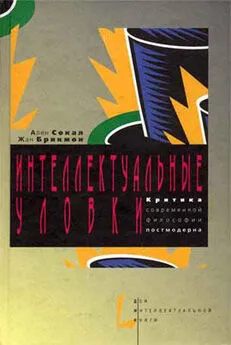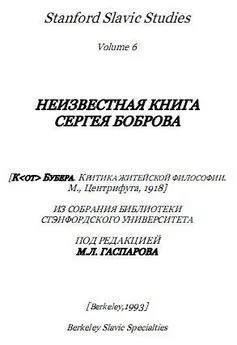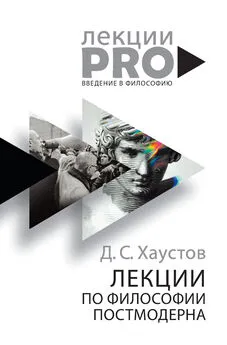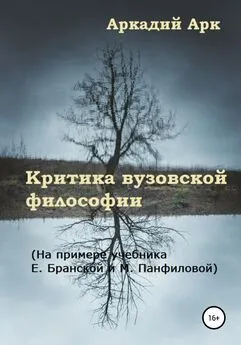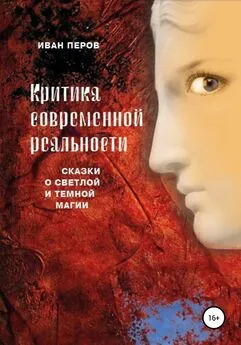Жан Брикмон - Интеллектуальные уловки. Критика современной философии постмодерна
- Название:Интеллектуальные уловки. Критика современной философии постмодерна
- Автор:
- Жанр:
- Издательство:Дом интеллектуальной книги
- Год:2002
- Город:Москва
- ISBN:5-7333-0200-3
- Рейтинг:
- Избранное:Добавить в избранное
-
Отзывы:
-
Ваша оценка:
Жан Брикмон - Интеллектуальные уловки. Критика современной философии постмодерна краткое содержание
Книга родилась из популярного сейчас розыгрыша, в котором один из нас опубликовал в американском культурологическом журнале Социальный Текст пародийную статью, напичканную бессмысленными, но, к сожалению, достоверными цитатами о физике и математике известных французских и американских интеллектуалов…
…чего именно мы хотим добиться? Не так много, но и не так мало. Мы показываем, что такие известные интеллектуалы, как Лакан, Кристева, Иригарэй, Бодрийар и Делез, неоднократно злоупотребляли научными концепциями и терминологией: или используя научные идеи полностью вне контекста, никак не обосновывая — отметим, что мы не против перенесения концепций из одной области в другую, а возражаем лишь против таких необоснованных переносов — или же кичась научным жаргоном перед своими читателями, которые не являются учеными, не обращая никакого внимания на его адекватность и даже значение. Мы не считаем, что это умаляет значение остальной части их работы, судить о которой мы не беремся.
http://fb2.traumlibrary.net
Интеллектуальные уловки. Критика современной философии постмодерна - читать онлайн бесплатно полную версию (весь текст целиком)
Интервал:
Закладка:
Grosser, Morton. 1962. The discovery of Neptune. Cambridge: Harvard University Press.
Guattari, Félix. 1988. «Les énergétiques sémiotiques». Dans: Temps et devenir: A partir de l’oeuvre d’llya Prigogine. Actes du colloque international de 1983 sous la direction de Jean-Pierre Brans, Isabelle Stengers et Philippe Vincke. Géneve: Patiflo. P. 83–100.
Guattari, Félix. 1992. Chaosmose. Paris: © Galilée.
Guerlain, Pierre. 1997. «Haro français sur le professeur américain». Le Monde (14 Janvier 1997): 15.
Hafele, J.C. et Richard E. Keating. 1972. «Around-the-world atomic clocks: Predicted relativistic gains». Science 177: 166–168. «Around-the-world atom¬ic clocks: Observed relativistic gains». Science 177: 168–170.
Havel, Väclav. 1992. «The end of the modem era». New York Times (March 1,1992): E15.
Hayles, N. Katherine. 1992. «Gender encoding in fluid mechanics: Masculine channels and feminine flows». Differences: A Journal of Feminist Cultural Studies 4(2):16–44. Hegel, G.W.F. 1972 [1812]. Science de la logique. Premier tome. Premier livre. L’être. Traduit par Pierre-Jean Labarrière et Gwendoline Jarczyk. Paris: Aubier-Montaigne.
Hobsbawm, Eric. 1993. «The new threat to history». The New York Review of Books (16 December): 62–64. Reproduit avec l’autorisation de The New York Review of Books, © Nyrev, Inc. [Reproduit dans: Eric Hobsbawm, On History (London: Weidenfeld & Nicolson, 1997), chap. 1.]
Holton, erald. 1993. Science and Anti-Science. Cambridge, Massachusetts: Harvard University Press.
Hume, David. 1983 [1748]. Enquête sur l’entendement humain. Traduit par Didier Deleule. Paris: Les intégrates de philo / Nathan.
Huth, John. 1997. «Latour’s relativity». À paraître dans: A House Built on Sand: Exposing Postmodernist Myths about Science, édité par Noretta Koertge. New York: Oxford University Press.
Irigaray, Luce. 1977. «La „mécanique“ des fluides». Dans: Ce sexe qui n’en estpas un. Paris: Éditions de Minuit. [Publication originate: L’Arc, n° 58 (1974).]
Irigaray, Luce. 1985. «Le sujet de la science est-il sexué?» Dans: Parler n’est jamais neutre. Paris: Éditions de Minuit. [Publication originale: Les Temps modernes 9,n° 436 (novembre 1982), 960–974.]
Irigaray, Luce. 1987a. «Une chance de vivre: Limites au concept de neutre et d’universel dans les sciences et les savoirs». Dans: Sexes etparentés. Paris: Éditions de Minuit.
Irigaray, Luce. 1987b. «Sujet de la science, sujet sexué?» Dans: Sens et place des connaissances dans la société, p. 95–121. Paris: Centre national de recherche scientifique.
Jankélévitch, Vladimir. 1931. Henri Bergson. Paris: Félix Alcan.
Kadanoff, Léo P. 1986. «Fractals: Where’s the physics?» Physics Today 39 (février): 6–7. Kimball, Roger. 1990. Tenured radicals: How politics has cor¬rupted higher education. New York: Harper & Row.
Kinoshita, Toichiro. 1995. «New value of the ct3 electron anomalous magnetic moment». Physical Review Letters 75: 4728–4731.
Koertge, Noretta, éd. 1997. A House Built on Sand: Exposing Postmodernist Myths About Science. New York: Oxford University Press.
Kristeva, Julia. 1969: Recherches pour une semanalyse. Paris: Seuil.
Kristeva, Julia. 1974. La révolution du langage poétique. Paris: Seuil.
Kristeva, Julia. 1977. Polylogue. Paris: Seuil.
Kühn, Thomas. 1983. La structure des revolutions scientifiques. Paris: Flammarion. [Traduit de: The Structure of Scientific Revolutions, 2nd edition. Chicago: University of Chicago Press, 1970.]
Lacan, Jacques. 1970. «Of structure as an inmixing of an otherness prerequisite to any subject whatever». Dans: The Languages of Criticism and the Sciences of Man. Edité par Richard Macksey et Eugenio Donato. Baltimore: © The Johns Hopkins University Press. P. 186–200.
Lacan, Jacques. 197 la. «Subversion du sujet et dialectique du désir dans l’inconscient freudien». Dans: Écrits 2. Paris: © Éditions du Seuil. P. 151–191.
Lacan, Jacques. 1971b. «Position de l’inconscient». Dans: Écrits 2. Paris: Seuil. P. 193–217.
Lacan, Jacques. 1973. «L’Étourdit». Scilicet, n° 4, 5-52.
Lacan, Jacques. 1975a. Le Séminaire. Tome 20: Encore, 1972–1973. Texte établi par Jacques-Alain Miller. Paris: © Éditions du Seuil.
Lacan, Jacques. 1975b. Le séminaire de Jacques Lacan (XXII). Texte établi parJ.-A. Miller. R.S.I. [Réel, Symbolique, Imaginaire] Année 1974-75. Séminaires du 10 et du 17 décembre 1974. Omicar?: Bulletin périodique du champ freu¬dien n° 2(1975): 87-105.
Lacan, Jacques, 1975n. Le séminaire de Jacques Lacan (XXII). Texte établi parJ.-A. Miller. R.S.I. [Réel, Symbolique, Imaginaire] Année 1974-75. Séminaires du 14 et du 21 janvier 1975. Omicar?: Bulletin périodique du champ freudien n° 3 (mail975): 95-110.
Lacan, Jacques. 1975d. Le séminaire de Jacques Lacan (XXII). Texte établi parJ.-A. Miller. R.S.I. [Réel, Symbolique, Imaginaire] Annde 1974-75. Séminaires du 11 et du 18 février 1975. Omicar?: Bulletin périodique du champ freudien n° 4 (rentrdel975): 91-106.
Lacan, Jacques, 1975e. Le séminaire de Jacques Lacan (XXII). Texte établi par J.-A. Miller. R.S.I. [Réel, Symbolique, Imaginaire] Année 1974-75. Séminaires du 11 et du 18 mars, du 8 et du 15 avril, et du 13 mai 1975. Omicar?: Bulletin péri¬odique du champ freudien n° 5 (hiver 1975/76): 17–66.
Lacan, Jacques. 1977. «Désire and the interpretation of desire in Hamlet». Traduitpar James Hulbert. Yale French Studies 55/56: 11–52.
Lacan, Jacques. 1978. Le Séminaire, Livre II: Le Moi dans la théorie de Freud et dans la technique de la psychanalyse, 1954–1955. Paris: Seuil.
Lamont, Michèle. 1987. «How to become a dominant French philosopher: The case of Jacques Derrida». American Journal of Sociology 93: 584–622.
Laplace, Pierre Simon. 1986 [5e éd. 1825]. Essai philosophique sur les probabilités. Paris: Christian Bourgois.
Lather, Patti. 1991. Getting Smart: Feminist Research and Pedagogy with/in the Postmodern. New York-London: Routledge.
Latour, Bruno. 1988. «A relativistic account of Einstein’s relativity». Social Studies of Science 18: 3-44. Reproduit avec l’autorisation de Sage Publications.
Latour, Bruno. 1995a. La science en action: Introduction à la sociologie des sci¬ences. Traduit de l’anglais par Michel Biezunski. Texte révisé par l’auteur. Paris: Gallimard. [Version originale: Science in Action: How to Follow Scientists and Engineers through Society. Cambridge, Massachusetts: Harvard University Press, 1987.]
Latour, Bruno. 1995b. «Who speaks for science?» The Sciences 35(2) (March-April): 6–7.
Latour, Bruno. 1997. «Y a-t-il une science aprés la guerre froide?» Le Monde (18 Janvier 1997): 17.
Laudan, Larry. 1981. «The pseudo-science of science?» Philosophy of the Social Sciences 11: 173–198.
Laudan, Larry. 1990a. Science and Relativism. Chicago: University of Chicago Press.
Laudan, Lany. 1990b. «Demystifying underdetermination». Minnesota Studies in the Philosophy of Science 14: 267–297.
Lechte, John. 1990. Julia Kristeva. London-New York: Routledge.
Lechte, John. 1994. Fifty Key Contemporary Thinkers: From Structuralism to Postmodernity. London-New York: Routledge.
Le Monde. 1984a. Entretiens avec Le Monde. 1. Philosophies. Introduction de Christian Delacampagne. Paris: Éditions La Découverte et Journal Le Monde.
Le Monde. 1984b. Entretiens avec Le Monde. 3. Idées contemporaines. Introduction de Christian Descamps. Paris: Editions La Decouverte et Journal Le Monde.
Leplin, Jarrett. 1984. Scientific Realism. Berkeley: University of California Press.
Leupin, Alexandra. 1991. «Introduction: Voids and knots in knowledge and truth». Dans: Lacan and the Human Sciences. Édité par Alexandra Leupin. Lincoln, Neb.:University of Nebraska Press. P. 1–23.
Levisalles, Natalie. 1996. «Le canular du professeur Sokal». Liberation (3 décembre 1996): 28.
Lodge, David. 1984. Small World. New York: Macmillan. [Traduction française: Un tout petit monde. Paris: Rivages, 1991.]
Loparic, Andréa. 1991. «Les négations et les univers du discours». Dans: Lacan avec les philosophes. Paris: Albin Michel. P. 237–264.
Lyotard, Jean-François. 1979. La condition postmoderne: Rapport sur le savoir. Paris: Éditions de Minuit.
Maddox, John, James Randi et Walter W. Stewart. 1988. «„High-dilution“ experi¬ments a delusion». Nature 334: 287–290.
Markley, Robert. 1992. «The irrelevance of reality: Science, ideology and the postmodern universe». Genre 25: 249–276.
Maudlin, Tim. 1994. Quantum Non-Locality and Relativity: Metaphysical Intimations of Modem Physics. Aristotelian Society Series, vol. 13. Oxford: Blackwell.
Maudlin, Tim. 1996. «Kühn édenté: incommensurabilité et choix entre théories». Traduit de l’américain par Jean-Pierre Deschepper et Michel Ghins. Revue philosophique de Louvain 94: 428–446.
Maxwell, James Clerk. 1952 [1 éd. 1876]. Matter and Motion. New York: Dover.
Merleau-Ponty, Maurice. 1968. «Einstein et la crise de la raison». Dans: Éloge de la philosophie et autres essais, p. 309–320. Paris: © Éditions Gallimard.
Merleau-Ponty, Maurice. 1995. La Nature. Notes Cows du College de France (1956–1960). Établi et annoté par Dominique Séglard. Paris: © Éditions du Seuil.
Mermin, N. David. 1996a. «What’s wrong with this sustaining myth?» Physics Today 49(3) (March 1996): 11–13.
Mermin, N. David. 1996b. «The golemization of relativity». Physics Today 49(4) (April 1996): 11–13.
Mermin, N. David, 1996n. «Sociologists, scientist continue debate about scientific process». Physics Today 49(7) (July 1996): 11–15, 88.
Mermin, N. David. 1997. «Sociologists, scientist pick at threads of argument about science». Physics Today 50(1) (January 1997): 92–95.
Metz, Andre. 1923. La relatrvité. Paris: Etienne Chiron.
Metz, Andre. 1924a. «Le temps d’Einstein et la philosophie». Revue de philoso¬phie 31: 56–88.
Metz, André. 1924b. [Réplique à Bergson 1924a] Revue de philosophie 31: 437–439.
Metz, André. 1926. Les nouvelles théories scientifiques et lews adyersaires. La relativité, 15e éd. revue et augmentée [de Metz 1923]. Paris: Étienne Chiron.
Milner, Jean-Claude. 1995. L’oeuvre claire: Lacan, la science, la philosophie. Paris: Seuil.
Monod, Jacques. 1970. Le Hasard et la Nicessité. Paris: © Éditions du Seuil.
Moore, Patrick. 1996. The planet Neptune, 2e éd. Chichester: John Wiley & Sons.
Mortley, Raoul. 1991. French Philosophers in Conversation: Levinas, Schneider, Serres, Irigaray, Le Doeuff, Derrida. London: Routledge.
Nagel, Ernest, James R. Newman, Kurt Godel et Jean-Yves Girard. Le théorème de Godel. Traductions de l’anglais et de l’allemand par Jean-Baptiste Scherrer. Paris: Seuil. [Version originale: Nagel, Ernest et James R. Newman. Godel’s Proof. New York: New York University Press, 1958.]
Nancy, Jean-Luc et Philippe Lacoue-Labarthe. 1990. Le titre de. la lettre, 3e éd. Paris: Galilee.
Nanda, Meera. 1997. «The science wars in India». Dissent 44(1) (Winter 1997): 78–83.
Nasio, Juan-David. 1987. Lesyeux de taure: Le concept d’objet «a» dans la théorie de J. Lacan. Suivi d’une Introduction à la topologie psychanalytique. Paris: Aubier.
Nasio, Juan-David. 1992. «Le concept de sujet de l’inconscient». Texte d'une intervention realisee dans le cadre du séminaire de Jacques Lacan «La topologie et le temps», le mardi 15 mai 1979. Reproduit dans: Cinq leçons sur la théorie de Jacques Lacan. Paris: Éditions Rivages.
Читать дальшеИнтервал:
Закладка:
